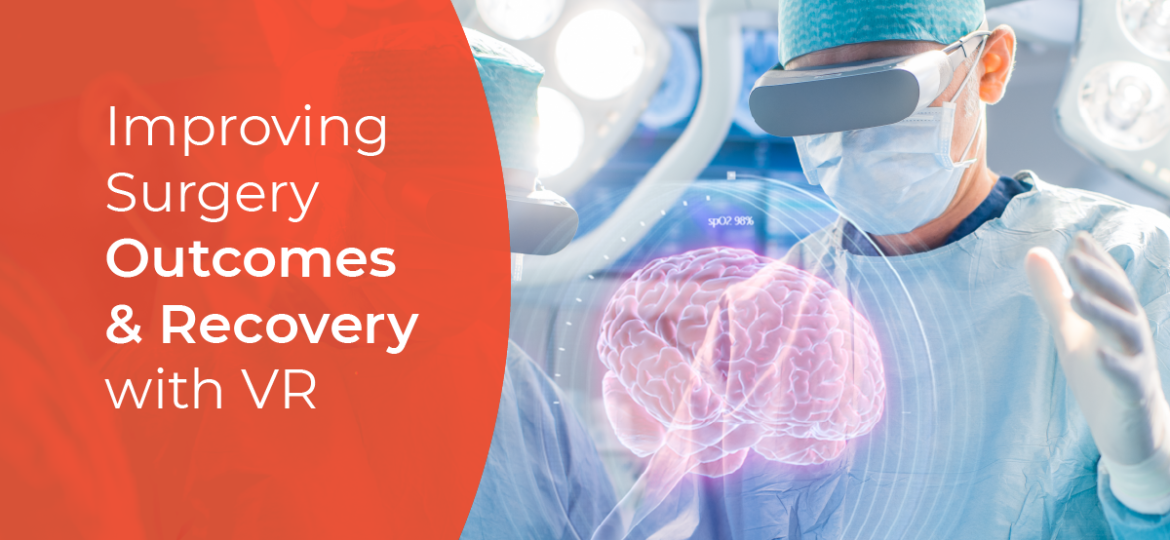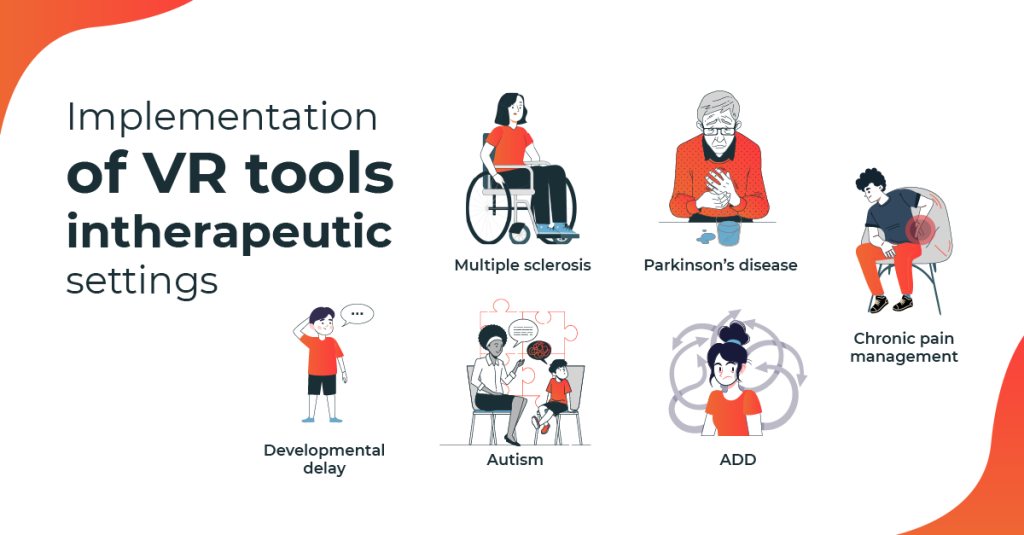
You may benefit from the trained services of a physical therapist (PT) to aid in your recovery if you have experienced pain or lost functional mobility due to an illness or injury. To help you get back to your usual level of exercise, your physical therapist may employ a variety of treatments. Virtual reality (VR) is one recently developed technique that some therapists are adopting into their practice.
So, how effective can virtual reality be for surgery outcomes or recovery and rehabilitation settings? VR equipment can be used in physical therapy in many ways. Implementation of this technology may be helpful to people with a range of conditions, including stroke, spinal cord injury, or pediatric and orthopedic conditions.
This article will highlight some notable studies conducted on virtual reality to determine its efficacy in decreasing pain after surgery or whether the implementation of VR as a clinical distraction intervention can benefit patient care. Read on.

What do patients experience in the VR environment?
With virtual reality headsets, users only see what is on the screen right in front of their eyes; the outside world is blocked. VR users can move around the virtual world they see on the screen as they move. However, can virtual reality equipment be employed in a therapeutic environment? Can total immersion in a virtual setting lead to better rehabilitation results? What are their applications and safety concerns, and does the evidence support their use for different diagnoses?
Effectiveness of VR in rehabilitation: Research
The usage of VR in medical contexts is still relatively new; hence there are not as many studies on it. However, the below studies showed potential in VR tools for physical therapy.
Medical Science Monitor’s study
In June 2019, the Medical Science Monitor published considerable research on the application of virtual reality in physical rehabilitation. The study evaluated the use of VR rehab with conventional physical therapy treatments for people with Parkinson’s disease who wanted to enhance their balance and gait. The study was conducted on 28 patients with Parkinson’s disease who were randomly divided into two groups. VR therapy was provided to one group for 12 weeks, while conventional PT was supplied to the other group for the same period.
Outcome
The Timed Up and Go Test, Unified Parkinson’s Disease Rating Scale, Berg Balance Scale, and Functional Gait Assessment were a few outcome measures utilized to evaluate the efficacy of the treatments. The balance and gait of both research groups improved. Still, the VR rehab group had noticeably more significant improvements, particularly in the areas measured by the Unified Parkinson’s Disease Rating Scale. As a result of any intervention, no participant was hurt. The use of VR in rehabilitation may have increased the functional mobility of Parkinson’s disease patients. Another study evaluating the benefits of VR rehabilitation for stroke patients came to similar conclusions.
VR for Relieving Postoperative Pain in Surgical Patients: Meta-analysis
By scanning PubMed (Medline), Embase, Web of Science, and other databases for research published up until November 2019, meta-analyses were undertaken to compare VR with standard care for treating postoperative pain. 8 randomized control trials (RCTs) with 723 participants were performed.
Outcome
The findings indicated that patients who received the VR intervention experienced less postoperative pain than those who received standard medical care. A subgroup analysis showed that VR could assist in relieving postoperative pain for both minor and major surgery.
Virtual Reality Tools for Vestibular Disorders Rehabilitation analysis
A 2015 analysis of Virtual Reality Tools for Vestibular Disorders Rehabilitation found that VR headsets may be a helpful adjunct to standard vestibular rehabilitation. Seven studies were analyzed, and the researchers concluded that VR might be a safe and effective way to heal symptoms of vertigo and balance loss related to vestibular hypofunction. They also found results might differ depending on the duration they took the therapy. For instance, patients who had more than 150 hours of VR training over many months appeared to recover more.
Virtual reality physical therapy applications
An excellent technique to stay engaged in your rehab program is occasionally to adopt a fresh and enjoyable treatment approach. If your rehabilitation is engaging and fun, you will be more motivated while you are going through it. Below are some practical applications of VR in physical therapy.
VR therapies for neurological conditions
People with neurological disorders may have arm impairments that make reaching difficult and lower extremity impairments that make walking and maintaining balance difficult. VR could be a valuable and entertaining technique to enhance balance and coordination in the upper or lower extremities during physical treatment. Neurological conditions that may benefit from VR tools include
- Parkinson’s disease
- Stroke therapy
- Spinal cord injury
- Multiple sclerosis
VR therapies for orthopedic conditions
Using virtual reality to create exciting and challenging settings may help you stay focused and engaged in your recovery if you have balance issues following an ankle sprain or knee surgery. Orthopedic conditions that may benefit from VR tools include
- Ankle sprains
- After hip, knee, or ankle surgery
- Shoulder pain
- Chronic pain management
It might be difficult and occasionally painful to carve out time during the day to see your PT to focus on your range of motion, strength, and functional mobility. Using virtual reality headsets is a unique approach to keep you captivated in your physical therapy treatments. Therefore, virtual reality in rehab may help you achieve your physical therapy goals, like increasing your mobility. It is also noteworthy that initial studies indicated that the risk involving VR in rehabilitation is less, and it is safe to use at the same time.

